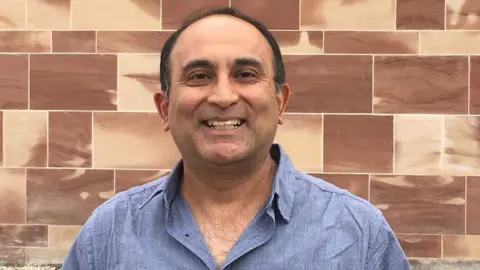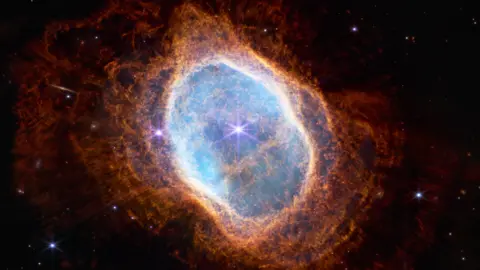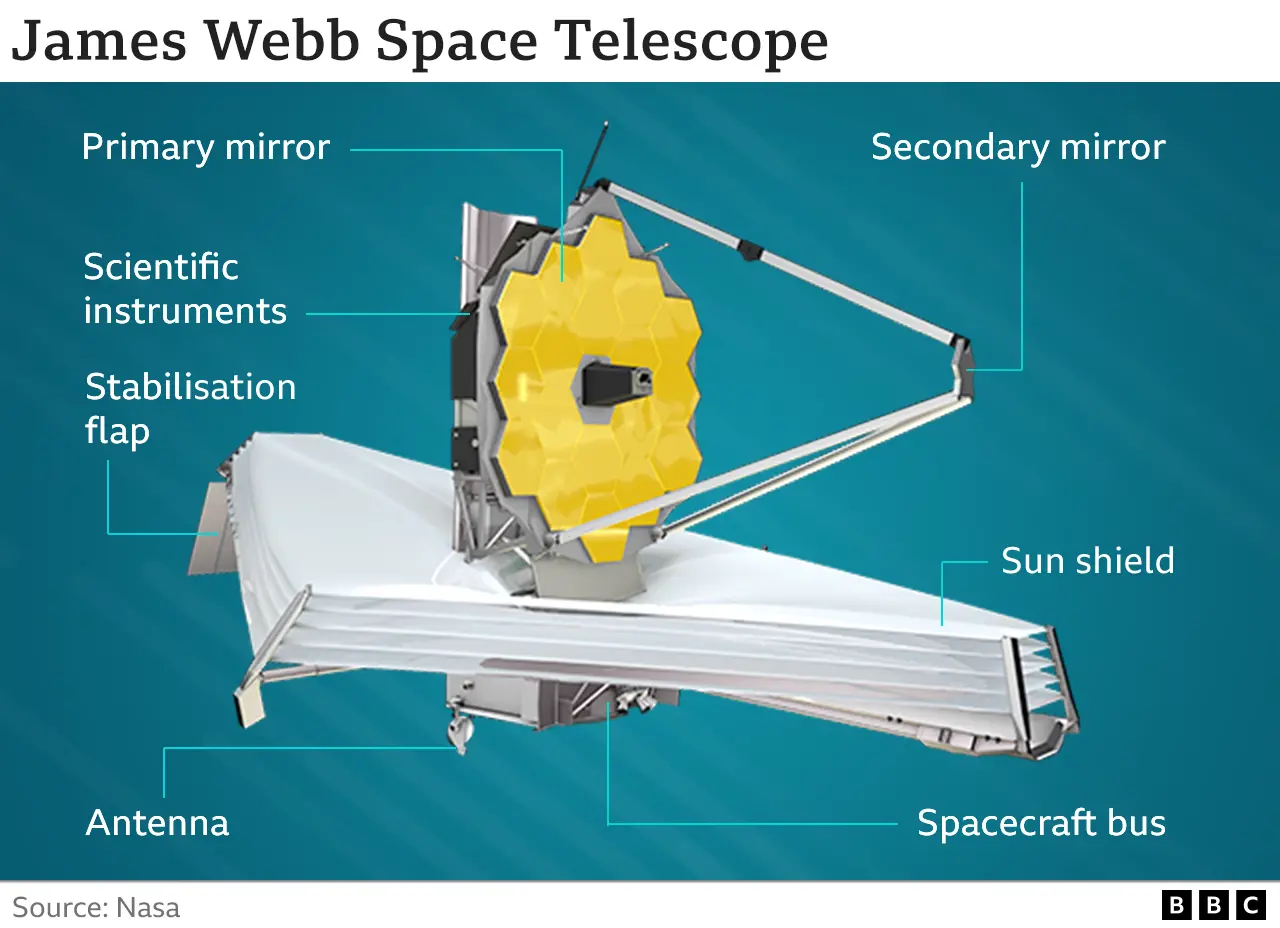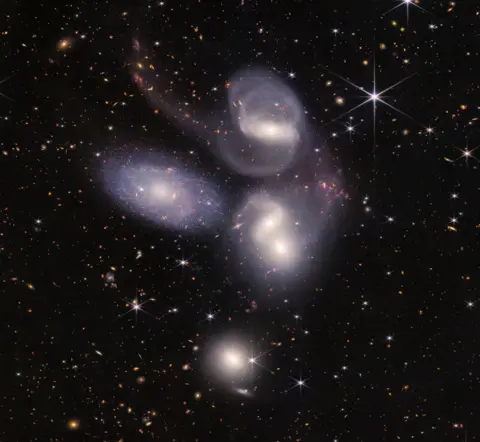James Webb Space Telescope: Searching for signs of life in space
It's a £8.5bn piece of kit that scientists hope will answer fundamental questions about our universe.
The James Webb Space Telescope will allow scientists to look at stars as they were 13.5 billion years ago, right after birth of the universe.
Researchers at Cardiff University are set to study supermassive black holes and planets that may support life.
"It's extremely exciting," said Dr Subhajit Sarkar, who will use Webb to analyse potentially habitable planets.
If you held up a grain of sand to the night sky, that tiny portion of space is the size of what was covered by the first image released by Webb.
It was the deepest and most detailed view of the Universe to date, and contained within it are billions of stars, billions of lightyears away from us.
"Where did the universe come from? How do stars and planets form? And ultimately, this question is about is there life out there."
 NASA, ESA, CSA, and STScI
NASA, ESA, CSA, and STScIThese are the questions that Cardiff University physics and astronomy lecturer Dr Sarkar is hoping Webb will help answer.
Together with Dr Nikku Madhusudhan, of Cambridge University, Dr Sarkar will analyse the atmosphere of the potentially life supporting planet K2-18b - 124 light-years away from Earth.
'It's almost certain that there's life out there'
When studying planets outside our solar system, called exoplanets, you cannot simply focus in on them and have a look - as they are often obscured by the bright light of the stars they orbit.
Dr Sarkar and his team must wait for the planet to pass in front of its star and detect the dip in light caused by this, this gives a good idea of the size of planet.
"If there are molecules in the atmosphere, they will absorb differently at different wavelengths," said Dr Sarkar.
This allows scientists to measure the different wavelengths and determine the make up of the planets atmosphere, if it contains water - and essentially, if it the planet could support life as we know it.
 Dr Subhajit Sarkar
Dr Subhajit Sarkar"Statistically speaking, you know, I think it's almost certain that there's life out there. I think the big uncertainty is how common it is," he said.
One of key factors in looking for potential life supporting planets is liquid water, because on earth water is essential for all life.
Dr Sarkar will focus on K2-18b as it is in the habitable zone of its star - the area where a planet is at the right temperature for liquid water .
"Wherever we find water, we get a bit interested," he added.
 NASA, ESA, CSA, and STScI
NASA, ESA, CSA, and STScILabelled the successor of the Hubble Space Telescope by NASA - but not its replacement - the James Webb has many different capabilities to the telescope that first allowed us to gaze deep into the cosmos.
Webb will not see visible light, like Hubble, but has been specially tuned to see in infrared light.
This is important, as it allows Webb to see stars from much further away and also peer through galactic debris much easier.
This is essential for Cardiff University's Dr Tim Davis, who will use Webb to study supermassive black holes at the hearts of distant galaxies.

"Black holes are very messy eaters, and they output a lot of energy into their environments. And we think that's very important for how their galaxies evolve," said Dr Davis.
"But the problem is, if they're very messy eaters, there's lots of material around them. And we have to pry through that."
Webb, with its infrared light sensors, will be able to penetrate this material and give scientists key information about how galaxies form, and evolve.
"When the supernova explodes, it's essentially a fireball... and it's going to stir up a lot of surrounding material," said Dr Mikako Matsuura of Cardiff University, who will study exploding stars.
 NASA/ESA/CSA/STScI
NASA/ESA/CSA/STScI"I know it should be good, but when I look at the data, wow, this is really good," added Dr Matsuura.
"Hopefully we can see very exciting explosions."
'Wales' space legacy'
Dr Davis described the feeling of being the first person in existence to know something about the universe as "intoxicating".
"It's really the best feeling, you are privy to the secrets from the universe that nobody else is and it's your job to take those and learn what you can from them and then publish them to tell the world."
"It's all part of building Wales' space legacy. There's a very strong space sector in Wales and we're happy to be a small part of that."
